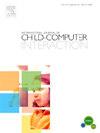发展创客活动促进青少年自主学习:系统回顾
Q1 Social Sciences
International Journal of Child-Computer Interaction
Pub Date : 2025-05-07
DOI:10.1016/j.ijcci.2025.100739
引用次数: 0
摘要
随着对技术和创新的日益重视,培养自主学习者已成为21世纪教育的主要目标。以创客和设计为中心的活动,包括3D打印,可能提供培养自主学习(SDL)技能的机会。为了确定在青少年使用创客工具期间增强SDL的因素,对针对SDL的研究进行了系统回顾。本综述确定了支持SDL的三个主要理论:a)自我调节学习(SRL), b)基于探究的学习,c)基于问题的学习。评估了每个框架对3D打印和制作活动的适用性。此外,由于框架之间存在共性,因此确定了SDL环境的六个关键特征。这些包括:a)指导支持,b) SRL组件,c)探究与选择,d)协作,e)差异化:平衡目标与能力,f)假设检验与探究。基于这些结果,提出了一套教师在高中课堂上使用制造活动时可以实施的实践。它进一步为未来研究有效整合3D打印作为一种超越行为参与的教育工具提供了基础。本文章由计算机程序翻译,如有差异,请以英文原文为准。
Developing maker activities to enhance adolescents’ self-directed learning: A systematic review
With a greater emphasis on technology and innovation, developing self-directed learners has become a predominant goal in 21st century education. Maker and design-centric activities, including 3D printing, may provide opportunities to foster self-directed learning (SDL) skills. To identify the elements that enhance SDL in adolescents during maker tool use, a systematic review of studies that targeted SDL was conducted. The review identified three main theories used to support SDL: a) self-regulated learning (SRL), b) inquiry-based learning, and c) problem-based learning. Each framework was evaluated on its applicability to 3D printing and making activities. Further, six key characteristics of SDL environments were identified as there were commonalities amongst frameworks. These include: a) guiding supports, b) SRL components, c) inquiry and choice, d) collaboration, e) differentiation: balancing goals with abilities, and f) hypothesis testing and inquiry. Based on these results, a set of practices is proposed that teachers can implement when using making-activities in their high school classrooms. It further provides a foundation for future research on the effective integration of 3D printing as an educational tool that extends beyond behavioural engagement.
求助全文
通过发布文献求助,成功后即可免费获取论文全文。
去求助
来源期刊

International Journal of Child-Computer Interaction
Social Sciences-Education
CiteScore
7.20
自引率
0.00%
发文量
73
 求助内容:
求助内容: 应助结果提醒方式:
应助结果提醒方式:


